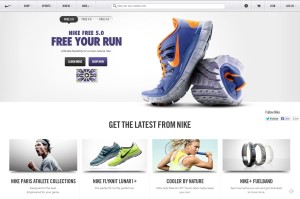 If you basically owned a category–a dominant market share–what would you do from a marketing perspective? Would you overhaul your marketing efforts? Innovate and create a whole new product line? Would you wait for the competition to catch up and then scramble?
If you basically owned a category–a dominant market share–what would you do from a marketing perspective? Would you overhaul your marketing efforts? Innovate and create a whole new product line? Would you wait for the competition to catch up and then scramble?
Your mind may already be racing ahead with even more questions. If history is any indicator, most of us–at least the marketers–would consider owning any category a dream. And by any definition, Nike has owned the athletic shoe and apparel category.
Even though Nike is the big player in the industry, they wisely understand that current signs don’t always predict future success. I feel like I’m writing an investment report. However, I’m interested in how much Nike has been ready to change their marketing team and budget to fit the new marketing environment.
I first wrote about the #makeitcount campaign, read it here. This is a great example of a customer focused campaign that is engaging, relevant and contains all the necessary elements of a social local mobile (SoLoMo) strategy.
Since this campaign, Nike has incorporated the campaign into their regular marketing communications.
In my SoLoMo Best Practices – Nike Case Study post, that I wrote for my monthly Windmill Networking SoLoMo column, I highlight important best practices.
For example, I explain why SoLoMo requires a different mindset, one that is focused on the customer experience from beginning to end of the purchasing journey. In fact, Nike’s message captures the essence of experiencing the product on a regular basis.
The marketing messages and assets are designed to help the experience, making it interesting enough to share and track and compete. All of these components help consumers and keep them coming back on a regular basis.
Despite the help, Nike is always present with product information so it’s easy to buy, and their videos provide help in initiating the experience. Nike doesn’t lose sight of their need to sell products.
I often compare SoLoMo marketing to assembling a puzzle:
- First you have to have a picture.
- Then, all the different pieces have to fit together–
- connected just so–
- to reveal the true picture.
Starbucks is another brand that understands SoLoMo principles. My team has just created an offer that you can use to evaluate your own practices. You can download it free of charge.
Nike has done an excellent job connecting the social, local and mobile. And the good news: you don’t have to be Nike or Starbucks to connect the pieces of your marketing puzzle.
What other examples can you think of?
